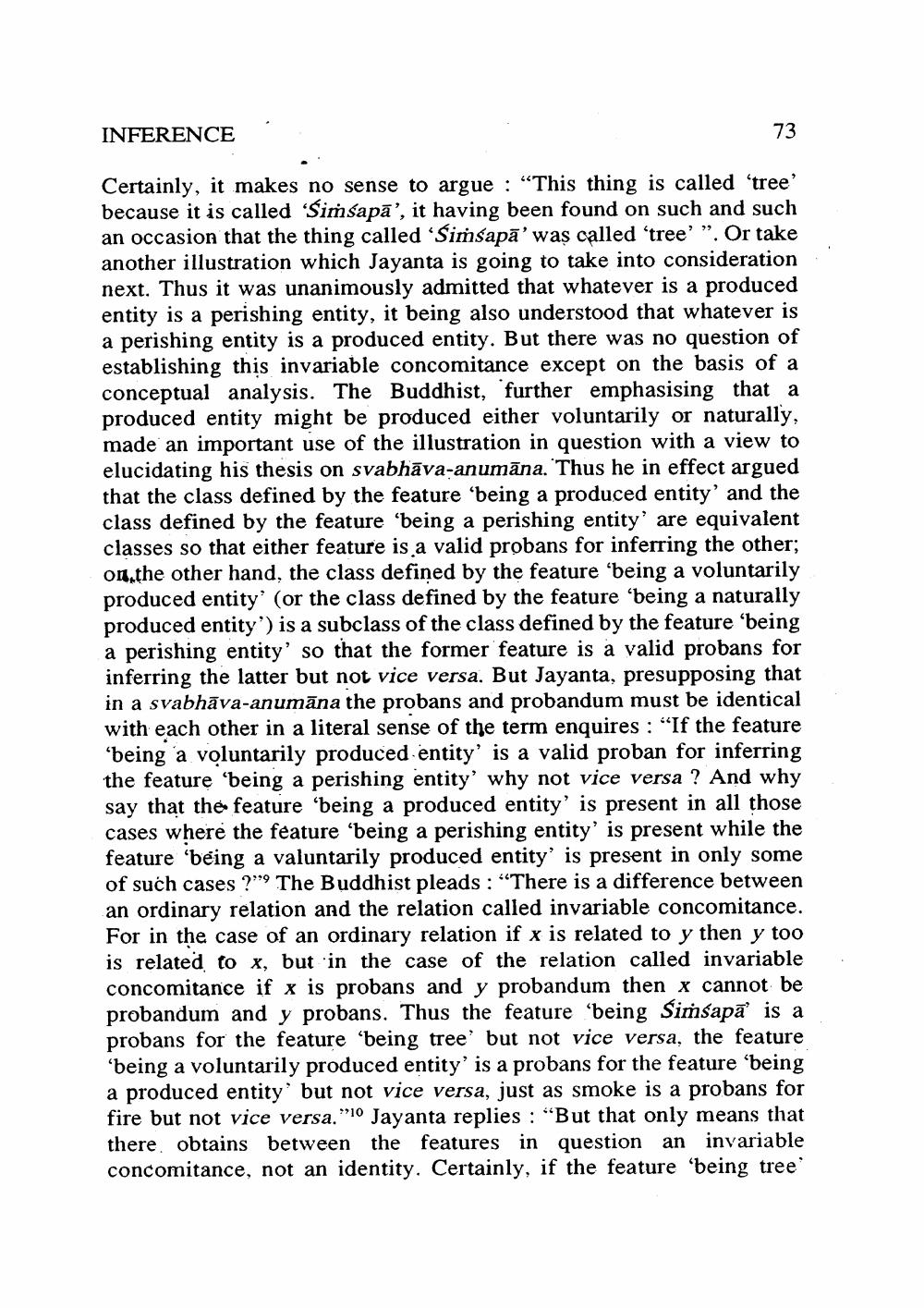________________
INFERENCE.
73
Certainly, it makes no sense to argue : “This thing is called 'tree' because it is called 'Simšapā', it having been found on such and such an occasion that the thing called 'Simsapā' was called 'tree'". Or take another illustration which Jayanta is going to take into consideration next. Thus it was unanimously admitted that whatever is a produced entity is a perishing entity, it being also understood that whatever is a perishing entity is a produced entity. But there was no question of establishing this invariable concomitance except on the basis of a conceptual analysis. The Buddhist, further emphasising that a produced entity might be produced either voluntarily or naturally, made an important use of the illustration in question with a view to elucidating his thesis on svabhāva-anumāna. Thus he in effect argued that the class defined by the feature being a produced entity' and the class defined by the feature being a perishing entity' are equivalent classes so that either feature is a valid probans for inferring the other; on the other hand, the class defined by the feature 'being a voluntarily produced entity' (or the class defined by the feature being a naturally produced entity') is a subclass of the class defined by the feature being a perishing entity' so that the former feature is a valid probans for inferring the latter but not vice versa. But Jayanta, presupposing that in a svabhāva-anumāna the probans and probandum must be identical with each other in a literal sense of the term enquires : "If the feature ‘being a voluntarily produced entity' is a valid proban for inferring the feature being a perishing entity' why not vice versa ? And why say that the feature being a produced entity' is present in all those cases where the feature 'being a perishing entity' is present while the feature being a valuntarily produced entity' is present in only some of such cases ??' The Buddhist pleads : “There is a difference between an ordinary relation and the relation called invariable concomitance. For in the case of an ordinary relation if x is related to y then y too is related to x, but in the case of the relation called invariable concomitance if x is probans and y probandum then x cannot be probandum and y probans. Thus the feature being Simsapā is a probans for the feature being tree' but not vice versa, the feature 'being a voluntarily produced entity' is a probans for the feature ‘being a produced entity' but not vice versa, just as smoke is a probans for fire but not vice versa."'10 Jayanta replies : “But that only means that there. obtains between the features in question an invariable concomitance, not an identity. Certainly, if the feature being tree




